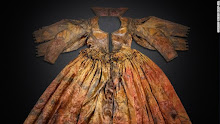
Another film featuring a slice of the life of Diana, Princess of Wales, premieres on November 5th. Spencer, starring Kristen Stewart, is called a “psychological drama that follows Diana’s decision to end her marriage to Prince Charles and leave the British royal family.” (The “decision” was a bit more complicated than that for all involved, especially Diana and Charles’ sovereign, Queen Elizabeth.) Nonetheless, using this occasion, I’ll post a short excerpt from my book in progress, The Spiritual Mission of a Princess….
....................................................
Chapter 3: Social Changes (excerpt)
“When the royal family enfolded Diana, they thought they had got a rather dim girl from the landowning Norfolk aristocracy—not exactly the stuff of revolution. They could not have known that she would be transformed into an international superstar who would make their lives hell.” This from an article, “Diana’s Britain,” by the editors at Newsweek magazine published the week after the princess’ funeral. Some feminists of the time were also fooled by “the mouse that roared.” British journalist Beatrix Campbell wondered how more conservative Britain could become when this pretty, inexperienced girl from old landed gentry married into the stale confines of royalty. Calling her wedding gown “a shroud,” she feared Diana would disappear within a dusty patriarchal construct. But Campbell and others began to see it differently.
Diana emerged into the world’s consciousness during the second year of Margaret Thatcher’s landmark run as Prime Minister and Great Britain, entrenched in a recession, was in turmoil with the country’s traditional industries in crisis and race riots destroying neighborhoods in the cities. “Into this unrelieved gloom the royal wedding injected a welcome splash of color and glamour,” the Newsweek article continued. “For that reason alone, Diana always carried a fund of good will with her. Yet at the time, few appreciated the central significance of the new princess; she was young and unformed, with enormous potential for growth.” And indeed, from that summer in 1981, Diana’s growth into a striking, outspoken woman paralleled Britain’s own growth into the modern era. Diana may have spent her childhood in the country, but as a young woman she needed the bustle and stimulation of the city and like much of the country’s youth, Diana loved “London’s glitzy rebellious values.” And for better or worse, she brought “an American style of emotionalism,” as feminist writer Naomi Wolf expressed, “to the rigid skin of British formality.”
The Labor Party picked up this youthful call to modernize with forty-three-year-old Tony Blair’s campaign for prime minister in 1997. Since his “agenda echoed Diana’s,” according to Catherine Mayer’s Time magazine article, “How Diana Transformed Britain,” Diana met in secret with him and his election team in support of Blair’s “mandate to build a more inclusive, caring Britain.” By the time of her death, only months after Blair’s election, she seemed to embody “how new Britons wanted their country to be.” After centuries of practiced reserve and mystery, it took the Royal Family a little longer to realize how much the country was changing even though they had clues inside their own family which had been moving, as Newsweek reported, “from archaic rule to modern dysfunctionality.” Then the shock of the princess’ death left them unprepared for the rising new era of more open public self-expression—the unbuttoning of England’s stiff-upper-lip sensibility. “The People’s Princess,” Mayer wrote, summing up Diana’s impact, “had unlocked hearts, reordered values, presided at the triumph of emotional intelligence over cold intellect, of compassion over tradition.”



































